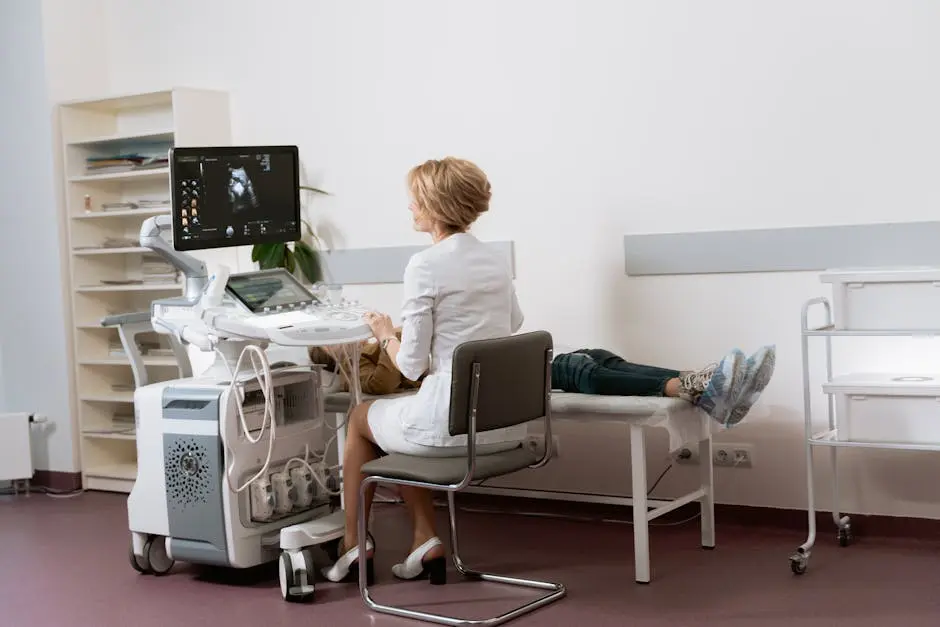Our Blog
What Are The Potential Complications of Untreated Gallbladder Swelling?
August 16, 2025
Gallbladder swelling can lead to various health issues if left untreated. Understanding these potential complications can empower you to make informed health decisions. In this blog post, we will explore the serious effects of ignoring gallbladder swelling and why timely intervention is essential.
Understanding Gallbladder Swelling
Before diving into complications, it’s crucial to comprehend what gallbladder swelling entails and its common causes.
The gallbladder, a small organ beneath the liver, plays a pivotal role in digestion. When it becomes swollen, it often indicates an underlying issue such as biliary tract obstruction, infection, or gallstones.
Common symptoms of gallbladder swelling include abdominal pain, particularly on the right side, nausea, and sometimes fever. Understanding these signs can lead to early diagnosis and treatment.
In many cases, gallbladder swelling is associated with dietary choices and lifestyle factors. For instance, a diet high in fats can lead to bile imbalances, exacerbating structural issues within the gallbladder.
Potential for Infection
Untreated gallbladder swelling can lead to infections, such as cholecystitis, which may require surgical intervention.
Cholecystitis is the inflammation of the gallbladder, often resulting from an obstruction due to gallstones or bile duct issues. This condition not only causes intense pain but can also lead to serious systemic infections if not addressed promptly.
In some cases, the immune response to the infection can lead to fever and chills, making it vital to recognize symptoms quickly and seek medical help.
Furthermore, an ongoing infection can contribute to sepsis, a life-threatening condition that arises from the body’s response to infection. Engaging in discussion with healthcare providers about gallbladder symptoms is critical.
Formation of Gallstones
Chronic swelling can contribute to gallstones, which can cause severe pain and further complications.
Gallstones form when there’s an imbalance in the substances that make up bile. Factors like cholesterol saturation or bilirubin levels can lead to crystallization, particularly in the setting of gallbladder swelling.
Once gallstones develop, they can block the bile duct, triggering a cascade of pain and inflammation. This ‘stone’ complication is not just physically painful; it carries the potential for serious health ramifications.
To prevent gallstone formation, maintaining a balanced diet and adopting a healthy lifestyle is essential. Adequate hydration and fiber consumption can mitigate the risk of gallstone development.
Risk of Pancreatitis
Gallbladder swelling can also affect the pancreas, leading to pancreatitis, a painful and serious condition.
Pancreatitis occurs when the digestive enzymes in the pancreas become activated while still inside the organ, leading to inflammation. This condition can arise acutely or develop into a chronic issue, often catalyzed by nearby gallbladder issues.
Symptoms of pancreatitis can range from severe abdominal pain radiating to the back, nausea, vomiting, and even fever. Recognizing these symptoms promptly is important for effective management.
Impact on Liver Function
Severe cases of untreated gallbladder swelling may affect liver function, leading to more complex health issues.
The gallbladder and liver are intricately connected through the bile duct system. When the gallbladder is swollen, it can pressure the bile duct, creating a backlog of bile that can affect liver function.
Consequently, untreated gallbladder swelling may lead to elevated liver enzymes, indicating hepatic distress. Over time, this can cause chronic liver disease if left unmanaged.
Signs You Shouldn’t Ignore
It’s important to recognize symptoms that indicate complications; these can include relentless abdominal pain, fever, or jaundice.
Jaundice, a yellowing of the skin and eyes, often signifies bile duct obstruction and should never be overlooked. If you or someone you know is experiencing this symptom, immediate medical attention is warranted.
Other signs like persistent nausea, vomiting, dark urine, or light-colored stools can serve as warning signs that your gallbladder needs professional evaluation.
Take Charge of Your Health
Recognizing the signs of gallbladder swelling and seeking timely medical attention can significantly reduce the risk of severe complications. Don’t hesitate to reach out to your healthcare provider if you’re experiencing symptoms.
